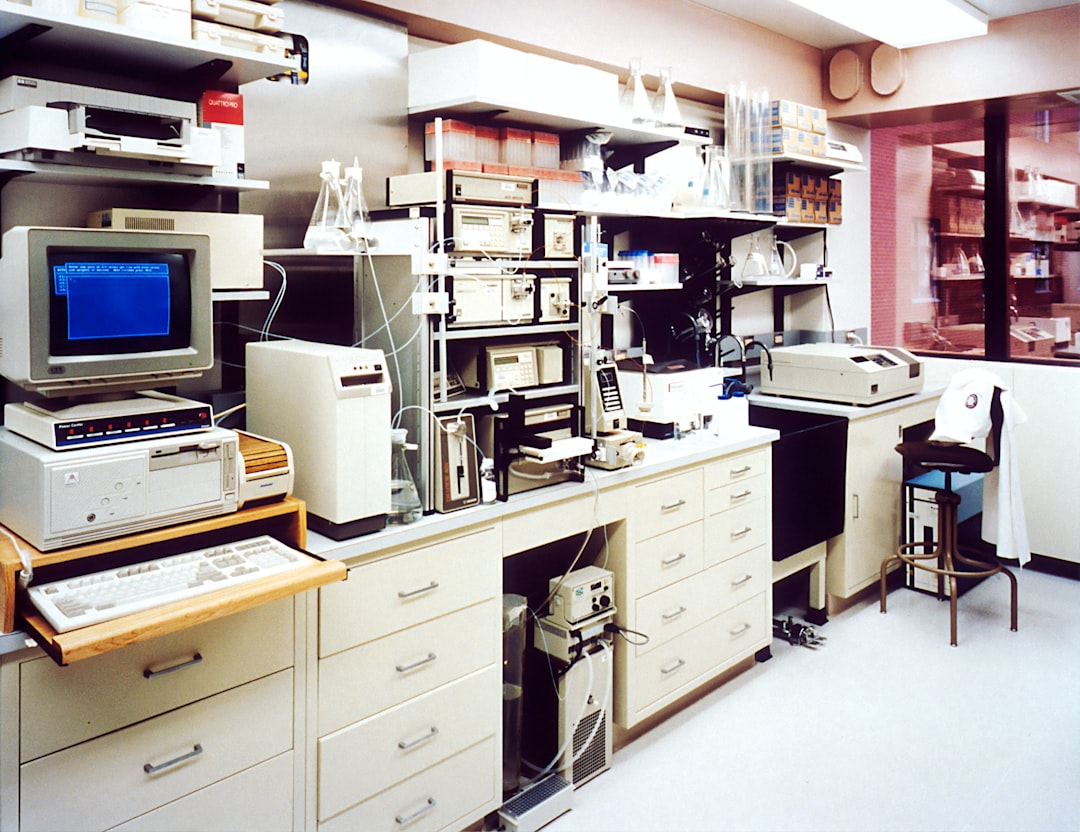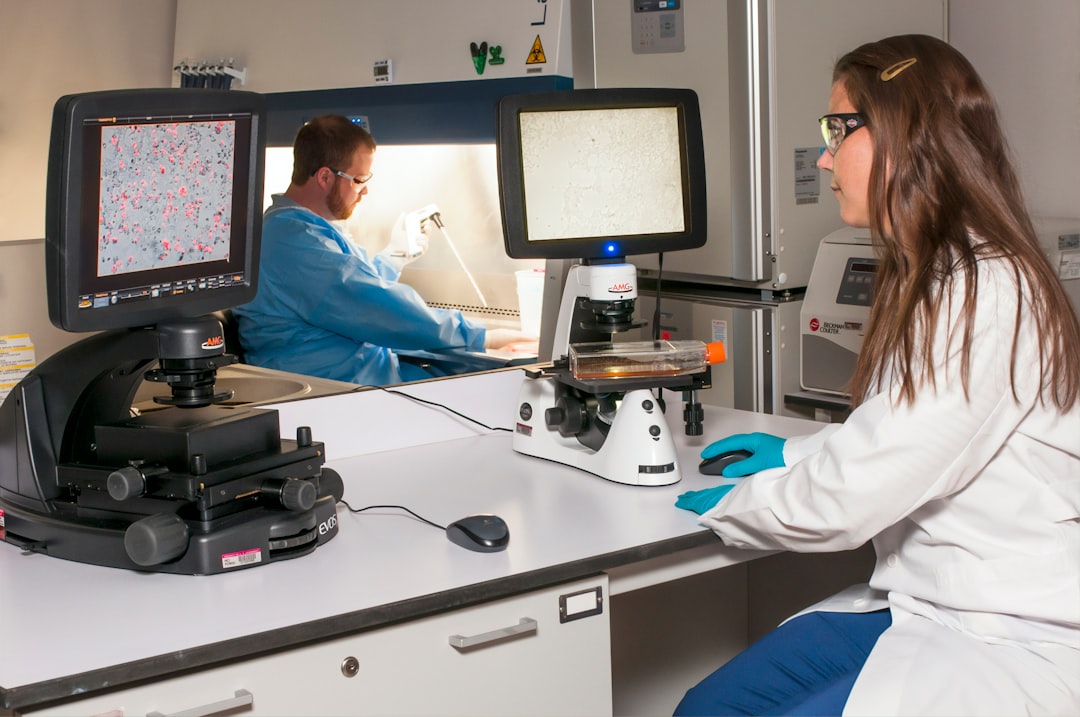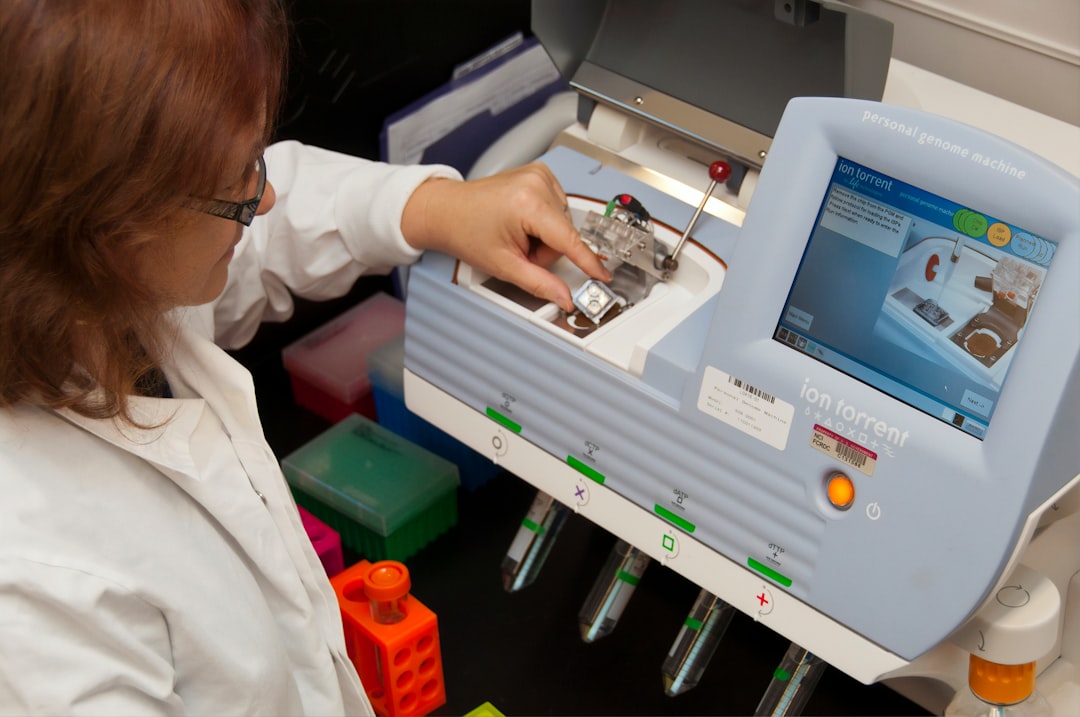

Engage prospects with a scan and streamline customer engagement with FREE QR code marketing tools by Sona – no strings attached!
Create a Free QR CodeFree consultation

No commitment

Engage prospects with a scan and streamline customer engagement with FREE QR code marketing tools by Sona – no strings attached!
Create a Free QR CodeFree consultation

No commitment
Organizations offering phlebotomy certification programs face increasing challenges in tracking timely, actionable student feedback. Printed forms, manual surveys, and outdated feedback boxes make it easy for critical engagement signals to slip through the cracks. This leads to missed opportunities to refine course experiences, longer resolution times for student concerns, and a reduced ability to measure the impact of instructional changes. As training expectations and accreditation standards evolve, such as the CPT1 requirements, the risks of relying on manual, analog processes become more apparent.
QR codes provide a simple path from in-person learning to digital engagement. For phlebotomy certification, QR-driven feedback workflows combine real-time data collection with structured analysis, enabling programs to adjust curriculum, improve instruction, and close communication loops faster. Whether students are in simulation labs, on campus for orientation, or at clinical sites, QR codes reduce friction and make it easier to share experiences at the moment they matter.
This guide shows how to implement QR codes strategically to capture feedback, surface engagement trends, and build productive feedback loops for students, educators, and administrators. By streamlining how insights flow from classroom to decision-maker, you can replace blind spots with clarity and transform everyday interactions into continuous program improvement.

Slow, paper-based feedback processes keep vital insights locked in desk drawers or scattered across spreadsheets. When feedback depends on memory or delayed follow-up, it loses accuracy and urgency. QR codes reduce that gap by letting students scan and respond immediately while experiences are fresh and details are accurate.
Start by mapping the learning journey from orientation to certification. Identify moments where students are most likely to share meaningful observations: during lab skill check-offs, after clinical rotations, and immediately following exams. Replace paper with digital workflows powered by QR codes so the program can collect, review, and act on feedback at speed and scale.
Modern platforms like Sona QR support dynamic code management, form integrations like Google Forms, and transparent reporting. This makes it easier for training leaders to proactively address high-value feedback, reduce the risk of disengagement, and adapt quickly as student needs and accreditation requirements change. With the right setup, QR-driven feedback becomes a program-level advantage rather than just a convenience. Start creating QR codes for free.

Phlebotomy education is hands-on and time-sensitive. Learners juggle lab practice, clinical placements, and exam prep with limited time between sessions. Traditional feedback formats often break in these environments because they ask students to recall details long after the experience or to navigate complicated forms on desktop devices. QR codes in education remove these barriers, converting in-the-moment intent into structured insights you can use.
Beyond convenience, QR codes enable an iterative improvement loop. Instead of waiting for end-of-term surveys, programs can collect and act on feedback continuously. This helps instructors refine demonstrations mid-cohort, standardize best practices across sites, and track whether interventions improve outcomes like skill proficiency and student confidence.
For phlebotomy programs, these benefits map to familiar assets: orientation packets, skill-lab instructions, clinical rotation binders, and exam-day printouts. Embedding QR codes in these materials creates a direct line between real-world activities and actionable insights.
Selecting the right QR code format ensures a smooth and purposeful user experience. In phlebotomy certification programs, formats that drive immediate action and capture structured data produce the fastest improvements.
In this vertical, forms and dynamic codes deliver the most value because they capture structured inputs and can be rapidly updated as competencies or accreditation requirements shift. Web links and vCards complement these use cases by simplifying access to resources and contacts students need most.

Feedback gaps usually live in the space between a student’s experience and your ability to capture it. If your program relies on suggestion boxes, end-of-term surveys, or sporadic email prompts, valuable context gets lost. QR codes close these gaps by being present in the environments where learning happens and where students naturally reflect on their performance.
Think of QR placement as both a visibility and timing strategy. You want the code visible at the exact moment a student is ready to share feedback, whether that is right after performing a venipuncture in the lab or immediately after a clinical shift ends. Strategic placements increase volume, quality, and representativeness of feedback.
These placements do more than improve survey completion. They convert every stage of the student journey into measurable, comparable data. Over time, this reveals patterns that help leaders prioritize investments, coach instructors, and refine curriculum with precision.

When QR codes are tied to clear objectives, they become a reliable input for improving satisfaction, competency, and completion rates. The following use cases align with the rhythms of a phlebotomy program and the moments students are most ready to share.
These use cases feed a continuous improvement loop. Instructors refine technique instruction based on lab feedback, clinical coordinators standardize processes using rotation insights, and administrators optimize exam logistics. Over time, programs see lifts in response rates, faster issue resolution, and clearer evidence that changes made are improving the student experience.
Each QR scan carries context: where it happened, when it happened, and what the student intended. With the right infrastructure, scan data becomes the backbone of segmentation and follow-up that respects student intent and improves outcomes. In education, this enables more meaningful communication, not spam. See Sona’s playbook on intent-driven retargeting.
Begin by deploying multiple QR codes across stages of the student lifecycle and tagging each with metadata. Tag by cohort, course module, clinical site, and intent. This allows you to create segments such as prospective students, newly enrolled students, active learners by module, and alumni. You can then tailor communications to help each group take the next best step.
For phlebotomy programs, valuable audience distinctions include first-time prospects versus returning prospects, current students versus clinical completers, and early-career alumni versus those seeking recertification. Use scan-based segments to share relevant workshops, tutoring sessions, or continuing education modules that match each group’s interests and readiness.
QR codes unify your offline and online communications so students and prospects have a clear path to action at every touchpoint. They also add measurability to channels that are traditionally difficult to track. Instead of a brochure sitting quietly on a table, it becomes an interactive entry point that tells you who engaged and what they did next.
To make this work, pair each QR code with a clear call to action, consistent branding, and a mobile-first destination. Add UTM parameters so scans flow cleanly into your analytics stack. With a central platform like Sona QR, you can manage codes across teams, monitor performance by channel, and sync scan data to your CRM.
Integrated thoughtfully, QR codes ensure continuity across the student journey. Prospects can move easily from awareness to application, and enrolled students can engage with support at the moment they need it.
QR projects succeed when they are scoped around clear outcomes and tested in the environments where students interact. Treat QR deployment like a mini product launch: define a specific problem, set success metrics, and iterate with real user feedback. The steps below turn that approach into a repeatable framework.
Before you begin, align stakeholders across instruction, operations, and marketing. Involve lab instructors, clinical coordinators, and student services early so they can advise on placement, message clarity, and timing. Their buy-in increases staff promotion of the codes and reinforces adoption among students.
Start with one high-value problem. For example, low response rates after skill demonstrations, inconsistent feedback on clinical rotations, or missed signals from anonymous prospects at open houses. Frame the outcome in measurable terms, such as a 30 percent increase in post-lab evaluation completion or a 20 percent reduction in time-to-resolution for clinical issues.
Map the stakeholders who will use the data and define how they will act on it. If the goal is post-lab feedback, instructors should agree on the questions they need answered and on a weekly review cadence. If the goal is employer interest capture at a job fair, admissions should set follow-up timelines and templates before the event.
Match the code type to your use case. Use dynamic codes for forms, rotating content, and any campaign that needs tracking or future updates. Use static codes only for fixed destinations like evergreen resource pages, and only when no analytics are needed.
When in doubt, select dynamic. With Sona QR, dynamic codes let you edit destinations, add UTM parameters, and pull performance reports without replacing printed assets. This flexibility preserves budget, especially for materials posted in labs and clinical sites where reprinting is costly or slow.
Design with clarity and accessibility. Add a short, benefit-led call to action such as Scan to share lab feedback in under 60 seconds or Scan to report a clinical issue confidentially. Use brand colors and a frame that separates the code from busy backgrounds. Include a short URL under the code for students without camera-enabled devices.
Test across common conditions before deployment. Check scannability from various distances and angles, in low light and glare-prone surfaces, and on multiple devices. Validate the form design with a few students to ensure questions are clear and the time to complete is reasonable, ideally under two minutes for quick checkpoints.
Place QR codes where attention is highest and context is clear. In lab settings, codes should be near exits or posted at each station. For clinical rotations, place codes in break rooms, on clipboards, or on site-specific instruction sheets. For recruitment and alumni engagement, use posters, brochures, and table tents at events.
Prepare staff to promote scanning at the moment of need. Instructors can prompt students to scan immediately after skill demonstrations. Clinical preceptors can remind students to submit rotation feedback at shift end. Admissions teams can ask visitors to scan for follow-up while still at the booth. The right prompt can double response rates.
Monitor scan volume, completion rate, and qualitative themes weekly during the first month. Look for patterns like low adoption at specific sites or drop-off on a particular question. Adjust placement, CTA language, or form length to address friction.
Close the loop with students and staff. Share quick wins such as equipment fixes or curriculum adjustments that came from QR feedback. When people see action, participation rises. Use Sona QR analytics to test alternative placements or calls to action and keep iterating for sustained performance improvements.

Without robust tracking, QR codes are just a convenience feature. With it, they become a core part of performance management. Phlebotomy programs need to know not only who scanned but also what happened next. Did feedback correlate with an instructional change, higher satisfaction, or improved pass rates on competencies? Analytics help you move from anecdote to evidence.
Start by defining the metrics that matter. For feedback, this could be scan-to-completion rate, average time to complete, distribution of responses by cohort, and time to resolution for issues raised. For recruitment, measure scan-to-inquiry conversion, applications started, and yield by event type. Then use consistent UTM parameters across QR destinations so engagement flows into your analytics stack cleanly.
The result is a closed-loop system. You know which placements drive the best feedback, which changes improve student experience, and where to invest next. Scans become the first touch in a measurable journey from interest or concern to resolution and improved outcomes.
Scaling QR usage is about consistency, clarity, and continuous iteration. Programs that treat QR codes as a standard practice across labs, clinical sites, and events see the strongest gains in participation and insight quality. Staff training and clear calls to action make the difference between curiosity and habit.
Think beyond current students. Alumni and employer partners are valuable sources of feedback and opportunity. QR codes can help you maintain relationships, gather job placement data, and surface demand for advanced or refresher courses.
By adopting a student-centered approach and sharing visible outcomes from feedback, you reinforce a culture where every scan contributes to program excellence. That transparency builds trust and encourages ongoing participation.
Phlebotomy certification leaders are being asked to do more with less: deliver high-quality, hands-on training, meet evolving accreditation standards, and support diverse learners with timely feedback. Analog feedback processes are not equipped for that reality. QR codes offer a practical bridge that meets students where they are and gives administrators the data to act quickly and effectively.
Embedding QR codes across the learning environment unifies feedback, reduces administrative overhead, and transforms moments that used to pass unnoticed into measurable signals. With platforms like Sona QR, you can manage codes centrally, update content dynamically, and integrate scan data into your CRM and analytics tools. The result is a connected system where scans lead to insights and insights lead to better decisions.
The opportunity is clear. Adopt QR-driven workflows to close the loop between classroom interaction and program action. Equip your teams with the data to improve instruction, support at-risk students sooner, and align offerings to market demand. With the right digital infrastructure, every scan becomes an opportunity to strengthen outcomes, improve satisfaction, and drive sustainable program growth.
QR codes have revolutionized phlebotomy certification programs by transforming feedback collection into an efficient, real-time process. Beyond simply gathering insights, they enhance learner engagement, streamline course improvements, and ensure program quality with actionable data at your fingertips. Imagine instantly capturing detailed feedback from every trainee and using that information to refine your curriculum and boost certification success rates.
With Sona QR, you gain the power to create dynamic, trackable QR codes that update on the fly—no need to reprint materials as your feedback campaigns evolve. Connect every scan directly to measurable outcomes like improved learner satisfaction and program completion rates, turning simple feedback into strategic growth. Start for free with Sona QR today and unlock the full potential of your phlebotomy certification programs through smarter, data-driven feedback collection.
Phlebotomy certification programs struggle with manual, paper-based feedback methods that cause missed engagement signals, delayed issue resolution, and difficulty measuring instructional impact.
QR codes enable real-time, digital feedback collection at key moments, increasing response rates, reducing administrative work, and allowing programs to act quickly on student insights.
QR codes should be placed at critical touchpoints such as lab exits, clinical break rooms, skill checklists, student ID badges, and exam materials to capture timely and relevant feedback.
Dynamic QR codes linked to mobile-optimized forms are most effective because they allow updates without reprinting and capture structured data, while web links and vCards complement resource access and contact sharing.
By collecting feedback continuously and in real time, QR codes enable instructors and administrators to refine curriculum, standardize best practices, and track improvements during the course rather than only at term-end.
Yes, platforms like Sona QR enable integration with CRMs such as HubSpot and Salesforce, allowing scan data to update student records and trigger targeted communications based on feedback and engagement.
Successful implementation involves choosing a clear use case, selecting the appropriate QR code type, designing and testing codes for accessibility, deploying them strategically, training staff to promote scanning, and monitoring analytics to optimize results.
QR codes bridge offline and online channels by enabling action at every touchpoint, tracking engagement from brochures, social media, direct mail, signage, and virtual sessions to provide measurable insights and improve recruitment and retention.
Programs gain improved data accuracy, faster issue resolution, increased student participation, reduced administrative burden, better alignment with accreditation standards, and enhanced ability to track and improve student outcomes.
Yes, QR codes are inexpensive to produce and scale, reduce time spent on manual data entry, improve data quality, and help programs allocate resources more effectively to areas that enhance student success.
Use Sona QR's trackable codes to improve customer acquisition and engagement today.
Create Your FREE Trackable QR Code in SecondsJoin results-focused teams combining Sona Platform automation with advanced Google Ads strategies to scale lead generation

Connect your existing CRM

Free Account Enrichment

No setup fees
No commitment required

Free consultation

Get a custom Google Ads roadmap for your business






Launch campaigns that generate qualified leads in 30 days or less.
